 | |
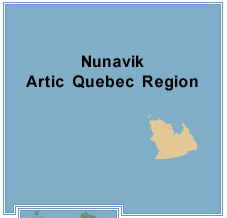 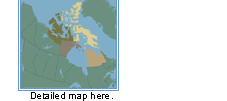 |
Nunavik The story of contemporary Inuit art started in the Nunavik region of the Canadian Arctic. While visiting the region, James Houston collected carvings from camps surrounding Povungnituk and Inukjuak. These carvings were featured at the first sale of contemporary Inuit art, held in Montreal in November 1949. At that time, artists from the region already displayed an interest in the narrative. "What we show in our carvings is the life we have lived in the past right up to today. We show the truth." (Paulosie Kasadluak, sculptor and graphic artist from Inukjuak) Inukjuak artists developed a preference for round, sensuous forms, which they embellished with delicate incisions. Faces or eyes were emphasized with ivory inlay. Themes revolved around daily camp life and representations of the universal mother and child theme. |
|
Povungnituk artists became known for their love of storytelling, both in prints and in sculpture. Stories reflected the rich local oral history or incidents from the artists' lives. The dark grey local stone was often decorated with graphic lines. Salluit artists, many of them women, developed a style of archaic, simplified forms. Using a coarse grey local stone, they showed people engaged in daily tasks. The single figures or scenes evoke a mood of quiet contemplation and a sense of timelessness.
HIGHLIGHTS FROM THE EXHIBIT 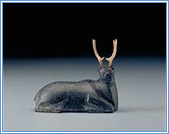
Kneeling Caribou with Antlers

Woman with Fox
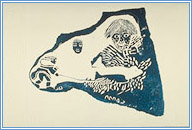
Lumak
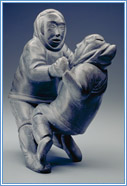
Fighting with a Rope
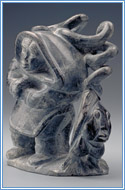
Woman with Katutayuq
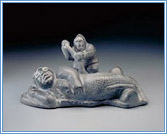
Pushing the Stranded Half-fish off the Rock
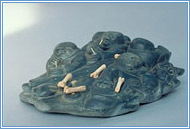
Family Sewing and Building a Kayak
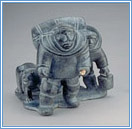
How They Hunted Caribou Inland
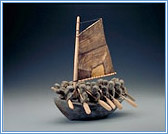
Migration    Iqqaipaa Menu | Exhibition | Nunavik | Qikiqtaaluk | Kivalliq | Kitikmeot and Inuvialuit | |